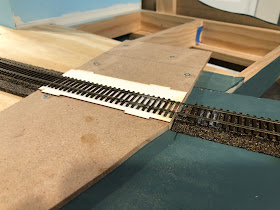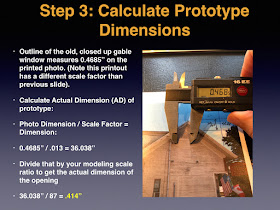 |
| I've started to experiment with photo backdrops. Yes, I plan to trim it to the ridgeline and not have the white borders on the final backdrop! |
... of the woodworking phase of layout construction!
Two significant (at least to me) accomplishments in the model railroading realm this week.
First of all, I'm happy to report that the significant benchwork construction is (at long last) completed - that means all the subroaded and fascia has been installed, See below for an overall view of the layout:
At this point the only construction left is to complete the swing gate and install a couple of shelves in some key locations. The shelves will prove useful for a place for visitors and operators to put their beverages - oh yes, and in case we ever operate the layout formally there'll be a place to store throttles and paperwork and the like that isn't the surface of the railroad!
There's still some track laying left to complete - primarily on the two peninsulas - the shot below shows the CV yard in Richford - obviously it's awaiting roadbed and track!
 The other thing I finished was a clinic on the layout that I just presented at the NMRA Mid-East Regional Convention in King of Prussia, Penn. For those keeping score, this is actually the second all new clinic I developed in the last 6 weeks - I'm hoping that this one will be a layout progress clinic that I can regularly update. I'd like to get as much mileage out of this as possible!
The other thing I finished was a clinic on the layout that I just presented at the NMRA Mid-East Regional Convention in King of Prussia, Penn. For those keeping score, this is actually the second all new clinic I developed in the last 6 weeks - I'm hoping that this one will be a layout progress clinic that I can regularly update. I'd like to get as much mileage out of this as possible!
The clinic was well received despite the 10 o'clock start time (that's 10pm!) and some issues getting my computer to talk to the projector.





















































